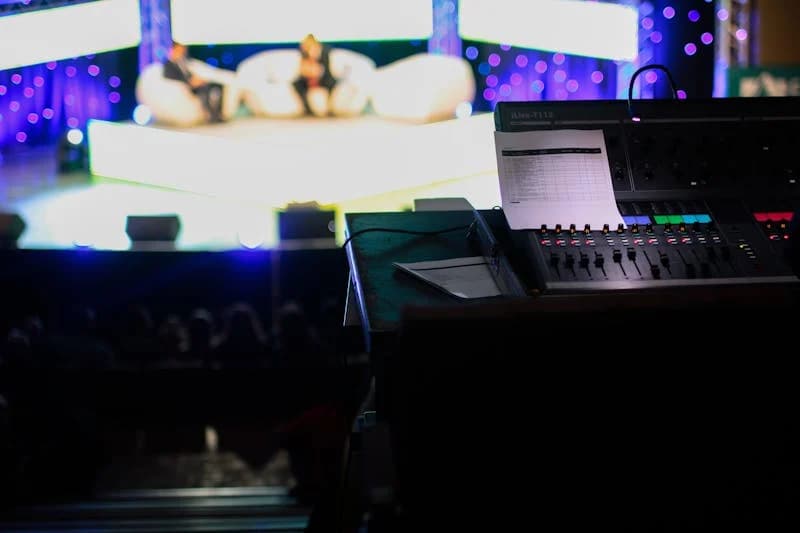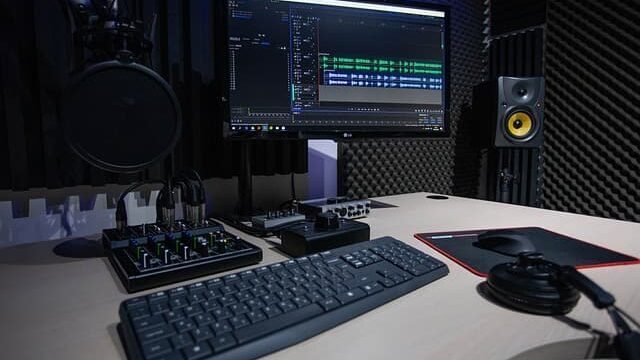Starting an internet radio station may seem like a daunting task, but having the right equipment makes the process much easier. Important elements are a computer with internet access, a quality microphone and an audio interface or mixer. Additional accessories such as headphones, pop filters and microphone stands may be needed to improve sound quality. The choice between USB and XLR microphones depends on sound quality preferences and audio processing capabilities.
Computer
The choice of computer plays an important role in the process of starting an Internet radio station. It is important that the device is powerful enough to work consistently with the necessary software and can provide a reliable Internet connection.
Windows or Mac computers are usually the best fit, as most broadcasting and radio programs are compatible with these systems. However, using a laptop or even a tablet is also possible, but may require additional customization and possibly the installation of additional software. A general rule of thumb is to choose a device with enough RAM and processor power to avoid delays and glitches during broadcasting.
Internet Connection
A stable Internet connection is a key factor for successful broadcasting of an Internet radio station, especially for live streaming. It is recommended to have a download speed of at least 2 megabits per second, which provides sufficient bandwidth to transmit a high-quality audio stream without delays and failures.
It is important to keep in mind that the higher the internet speed, the more reliable and stable the broadcasting will be. For radio stations operating in automation mode, a constant internet connection is not required once content is uploaded and playlists are set up, but internet access is still required to update program content and manage the radio station via cloud services.
Microphones
USB microphones:
USB microphones are an easy and affordable choice for beginners. They connect easily to your computer and require no additional equipment. Examples of popular models include the Rode NT-USB Mini and Blue Yeti, which are ideal for streaming and podcasting.
XLR microphones:
XLR microphones offer higher sound quality and more options for audio customization. They require connection through an audio interface or mixer. Examples include the Shure SM7B and the Rode PodMic. These microphones are suitable for more advanced users who want to control every aspect of their sound.
Audio Interfaces and Mixers
An audio interface converts microphone signals for processing by a computer and usually has fewer features than a mixer. Examples include the Focusrite Scarlett 2i2 and the latest Focusrite Vocaster 2, which supports camera connectivity and has Bluetooth functionality.
Mixers offer even more control over the sound and can include multiple inputs and faders to control a variety of audio sources. Examples include the Behringer Xenyx and the Rode Rodecaster Pro.

Additional Equipment
Headphones:
Quality headphones are essential for monitoring sound during broadcasting. It is advisable to choose models with closed-back for better sound isolation. For example, Rode NTH-100 or Beyerdynamic DT770.
Microphone stands and holders:
It is recommended to use microphone stands or holders to make your microphone easy to use. They will help to avoid unnecessary noise from hitting the table and improve the quality of recording.
Pop filters:
Pop filters protect the microphone from harsh sound bursts and provide a cleaner recording. They are especially important when using sensitive microphones such as the Shure SM7B.
Conclusion
Preparing to launch an Internet radio station requires careful attention to equipment selection. Basic elements such as a computer, a reliable Internet connection and a quality microphone will ensure stable broadcasting. Additional accessories such as headphones and pop filters will help improve sound quality.
It is important to remember that the right choice of equipment will allow you not only to start broadcasting, but also to maintain it at a high level.
FAQs
Do I need special software to manage my Internet radio station?
Yes, special software is required to effectively manage your radio station. For example, programs like RadioDJ or SAM Broadcaster provide tools for playlist management, broadcast automation and audio processing.
Can a mobile device be used to control the radio?
Mobile devices can be used to control the radio, but their functionality may be limited compared to full-fledged computers.
Is it necessary to have a license to broadcast music on the Internet?
Yes, broadcasting music tracks requires obtaining the appropriate licenses for the rights to use the music to avoid copyright infringement.
What other accessories may be needed for the radio station?
You may additionally need sound cards, signal amplifiers, anti-vibration microphone stands, and professional audio processing software.
